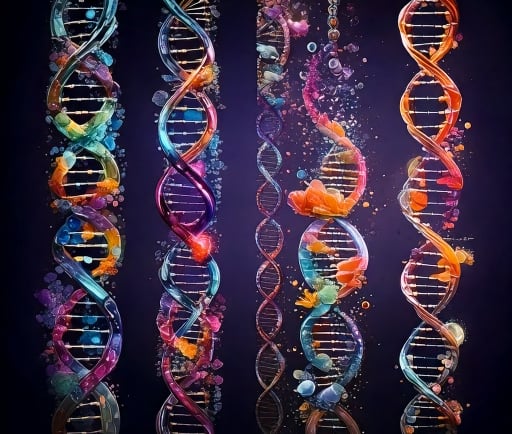The Various DNA Structures in the Double Helix


Introduction to DNA Structures
The double helix structure of DNA is one of the most significant discoveries in molecular biology, explaining how genetic information is stored, replicated, and transmitted. Within this intricate framework, different forms of DNA coexist, each playing unique roles in cellular function. This post will explore the various DNA types: A-DNA, B-DNA, C-DNA, and Z-DNA, delving into their distinctive characteristics and implications in genetic studies.
A-DNA, B-DNA, C-DNA, and Z-DNA: The Fundamentals
Among the different structures of DNA, B-DNA is the most common form found in living organisms. It features a right-handed helix, which is crucial for the standard bidirectional replication process of genetic material. However, during specific environmental conditions or due to the presence of high salt concentrations, DNA can shift to an A-DNA conformation, which is shorter and more compact than its B counterpart.
C-DNA is another variant that is less common and is typically observed during periods of cellular stress or certain diseases. Its unique helical structure aids in understanding how DNA adapts to preserve biological functions under varying conditions.
In contrast, Z-DNA is a left-handed helix characterized by its zigzag backbone configuration. It is primarily linked to regulatory regions of genes and can play a role in the modulation of gene expression, highlighting the dynamic nature of DNA structures as they respond to biological needs.
The Importance of Understanding DNA Structures
Studying the various forms of DNA like A-DNA, B-DNA, C-DNA, and Z-DNA is critical in genetic research and biotechnology. Each structure provides insights into how DNA behaves under different circumstances, influencing the development of novel therapeutic strategies and understanding genetic disorders. Additionally, knowledge of these structures can improve techniques in genetic engineering and synthetic biology, yielding advancements in medicine and agriculture.
As we further explore the realm of molecular genetics, recognizing the significance of the different DNA conformations will enable researchers to unlock the complexities of life at a fundamental level. Through such understanding, future developments in gene therapy and personalized medicine may flourish, showcasing the profound implications that arise from the intricate world of DNA.
